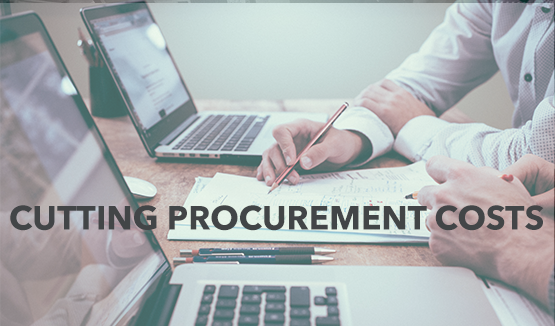(+34) 900 861 374 Mon-Fri: 8:00 to 18:00
(+34) 900 861 374 Mon-Fri: 8:00 to 18:00

A Bain & Company survey found that more than half the executives questioned felt that cost pressures constrained their ability to make strategic investments.
As procurement costs represent between 25 to 60 percent of a company’s costs depending on the industry, aiming for reductions in this area is advisable.
Reducing procurement costs has long been recognised as one of the fundamental enablers of business strategy and is often the preferred method for achieving sustainable cost reductions.
However, many companies under-manage this opportunity as they lack predefined, systematic approaches. When asked about the success of their procurement management initiatives, 72% of respondents in the survey stated that they had reported savings but also that they believed they could have done substantially better.
So how do best-in-class companies achieve significant savings by adjusting their procurement processes and how can you achieve the same?
The answer: Don’t focus on price alone but aim to improve your supply chain as a whole.
The following approaches to lowering procurement costs, improving supplier terms and decreasing product prices are a good start for any company aiming to reduce its supply chain costs:
To start and to know where you stand, map your spendings – who is spending how much on what and from what supplier. Focus on departmental spending as well as on evaluating which suppliers are essential to your organisation.
Continue to map your spendings as you change your procurement processes so you can track your successes and highlight areas for improvements.
Negotiate and collaborate to create lasting relationships with suppliers. Being a collaborative client allows you to work together with your suppliers to reduce costs and obstacles on both sides.
Involving suppliers in long-term demand planning and discussing how demand information can be communicated most effectively increases the efficiency of relationships. Demand and Supply Plans also help to consolidate purchasing intervals to reduce delivery costs and purchasing documentation required.
Furthermore, a collaborative relationship with suppliers allows for continuous feedback about the stock and early communication of the details of delivery (e.g. specific delivery dates, packaging, identification and other peculiar issues related to your stock).
Efforts are not only to be exerted by a procurement officer or team but goals should be set organisation-wide and by leaders from all parts of the business.
Realised benefits should be measured, tracked and reported organisation-wide and forecasting, budgeting and procurement departments need to work together to maximise these benefits.
Moreover, set goals need to be complemented by well-defined implementation programs and processes to ensure goals turn into everyday practice and to avoid efforts reducing over time returning to old patterns.
Additionally, staff directly in contact with suppliers should be involved in finding procurement solutions as they may have advice or ideas for practical solutions related to specific suppliers.
Always consider changing suppliers. Especially when renegotiating or renewing a contract, make sure to examine all your options. Markets might have changed since your last search for better options and new suppliers may be able to offer better contracts.
Risk assessments are essential before choosing a supplier. However, they are just as essential during the period of your contract. Economies change and so do your suppliers’ circumstances which need to be assessed on a continuous basis.
Contract management processes should be improved continuously, too.
Make sure to regularly review your volume requirements: Are you ordering too much? To lower demand, the re-use and scarce use of ordered material can be encouraged.
Often ordering in batch can reduce the number of transactions required by your accounting department and many suppliers offer better deals when buying larger quantities.
Moreover, aim to buy at the most cost effective time if there is seasonality involved in your supplier’s sector.
Procurement costs are often increased by fragmented buying processes. This occurs when many people make individual purchase decisions within the same product category. This is to be avoided by setting certain vendors as standard vendors and narrowing down the set of products that can be bought by employees.
From the methods above, it is clear that there are multiple ways to improve your supply chain and thereby reduce costs for you and your clients.
Not all changes have to be implemented immediately but it is advisable to take a good look at your procurement processes, chances are there is space for improvement!
NEED HELP?
VISIT OUR FAQ PAGE AND EXPLORE ALL THE ANSWERS ABOUT NOVICAP YOU ARE LOOKING FOR
